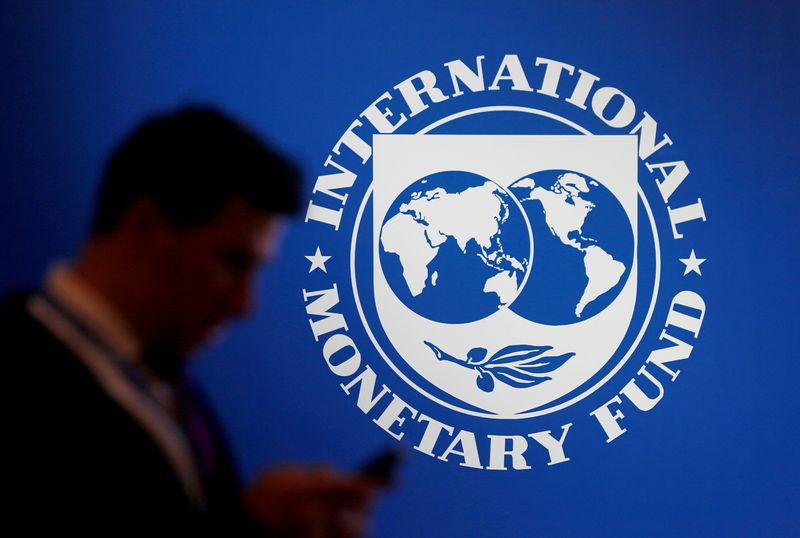By Andrea Shalal, Natalia Zinets and David Lawder
WASHINGTON (Reuters) -Ukraine's economy is expected to contract by 10% in 2022 as a result of Russia's invasion, but the outlook could worsen sharply if the conflict lasts longer, the International Monetary Fund said in a staff report released on Monday.
The report, prepared ahead of the IMF's approval of $1.4 billion in emergency financing, said Ukraine's economic output could shrink by 25% to 35%, based on real wartime gross domestic product data from Iraq, Lebanon and other countries at war.
Ukraine had an external financing gap of $4.8 billion, IMF staff said in their March 7 report, but its financing needs were expected to grow and it would require significant additional concessional financing as a result of the war.
The IMF is working to set up a trust fund instrument through which bilateral donors can channel resources to Ukraine, an official with the global lender said.
The $1.4 billion already approved in emergency financing is the maximum Ukraine can borrow under current IMF rules, but the loan is having a "catalytic" effect in encouraging other donors, the official said.
Ivanna Vladkova Hollar, the IMF mission chief for Ukraine, said Ukrainian authorities were making "a remarkable effort" to keep the country's economy and financial system running in the face of the war.
"Making wage and pension payments, restocking ATMs with cash, opening bank branches ... continuing to make payments on external debt obligations, so that post-war they can resume normal operations with their creditors and markets. It's really actually a remarkable, remarkable effort," she said.
The report forecast a deterioration in Ukraine's growth outlook of at least 13.5 percentage points relative to a pre-war baseline, with output falling 10% in 2022, assuming a prompt resolution of the war, and substantial donor support.
That compares to a 6.6% drop in output in 2014, the year that Russia annexed the Crimea region of Ukraine, and just under 10% in 2015.
IMF staff said there was massive uncertainty about the outlook, given the intensity of the conflict, and warned that increasing loss of physical capital stock and huge refugee flows could result in "significantly more pronounced output contraction," a collapse in trade flows and lower tax revenues.
RISING DEBT
The war - the biggest in Europe since World War Two - has sparked a massive humanitarian and economic shock, the IMF report said, citing rapidly increasing loss of life and significant infrastructure damage across the country. Russia describes its invasion as a "special military operation."
It said Ukrainian authorities had continued to service their external debt obligations and the country's payment system remained operational, with banks open and mostly liquid.
It said authorities had implemented appropriate emergency measures to stabilize markets and the economy, but the downside risks were "exceedingly high" and the country faced large fiscal and external financing gaps.
The country's public debt was expected to spike to 60% of GDP in 2022 from around 50% in 2021, the report said.
Vladyslav Rashkovan, alternate executive director for Ukraine at the IMF, told the IMF's board that Ukrainian authorities were in broad agreement with the IMF staff's assessment of the economic situation, and underscored the need for more financial support.

He said liquidity buffers adopted after the Russian invasion were sufficient for financing expenditures and repaying liabilities, with most Ukrainian companies still paying taxes and some even paying in advance to support the budget.
In his statement, Rashkovan said Ukraine had spent the equivalent of $1.4 billion on servicing and repayment of its foreign exchange public debt since the start of the war.